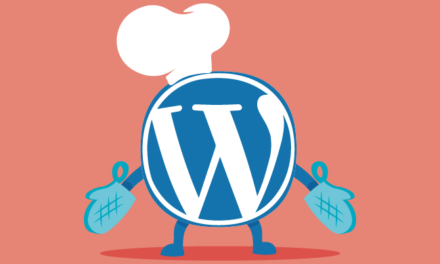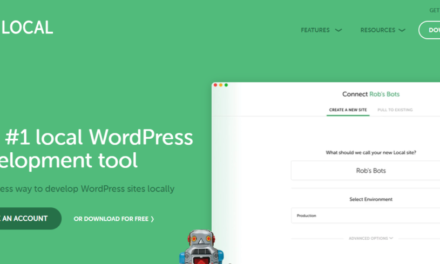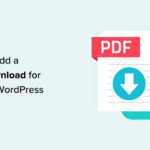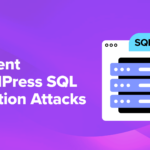Imagine your WordPress website is a race car and you’re its driver. You’re out there to win the race on a track called the internet. To be the grand prix champion, not only does your car have to be well-tuned (optimized) for speed, you also need to factor in many things.
Track builds, weather conditions, driver skill, talent of the pit crew, competitors’ strategy. You’ll also want to ensure that your car is running as efficient as possible, giving you max performance. What will you do to ensure that?
Maintain your car’s engine and body in tip-top shape. Service it regularly by changing the oil, coolant, filters, and any others fluids on time. Maintain optimum tire pressure. Replace the tires and brake pads before they’re worn out. And so on…
It’s the same with your WordPress site, except it’s not so much of a hassle. Once you’ve taken care of most of the steps mentioned here once, thanks to automation, you don’t have to worry about them for a very long time.
A faster website will not only win you admiration from your site visitors, it’ll also help your website rank better in search engine results.
Car analogy fans are in for a fun ride. Put your seatbelts on and backup your site. Let’s get optimizing!
- Choose a Great Web Host
- Use a Fast Theme and/or Framework
- Install a Solid Cache Plugin
- Connect Your Site to a Reliable CDN
- Enable Gzip Compression
- Install Only the Most Essential Plugins
- Update WordPress, Plugins & Theme Regularly
- Optimize Your Site’s Database
- Optimize Your Uploaded Images
- Use Lazy Loading for Faster Page Loads
- Offload Heavy Media to External Platforms
- Everyone Loves a Fast Car… and a Fast Website
Choose a Great Web Host

It doesn’t matter how fast, expensive, and well-tuned your car is if the lane it runs on is muddled with potholes, frequent speed bumps, roadblocks, traffic congestion, etc. Your car cannot perform at its best.
A web host is like the lane your WordPress site runs on. The first step to ensuring that your website runs as fast as possible is to choose the perfect web hosting plan.
If you’re running a simple personal blog with minimal visitors, you may opt for a cheap shared hosting plan with minimal server resources. But if your web host’s resources don’t meet your website’s needs, it’s going to face poor response and loading times.
It’s quite common to see many website owners run their sites on a shared hosting plan with insufficient RAM and CPU. These server resources are shared with hundreds of other websites (hence the term shared hosting). And then they wonder why their sites don’t load faster even after performing all the optimization tasks.
You need to also make sure that your web hosting company supports the latest technologies such as PHP 7 (or higher), HTTP/2, and TLS 1.3.
That’s why you need to eliminate this possibility right away and go with an above-average hosting plan. But speed comes at a cost. And the cost depends on how fast you want to go.
WPMU DEV Hosting is a fully managed WordPress hosting solution, which means that we’ll keep your website’s track (and its lanes) well maintained at all times. Every site you host with us gets its own dedicated memory, CPU, and SSD storage resources. This ensures that your site can scale efficiently with its growing needs without compromising on its speed. If you’re with another host and think it’s not simple enough to migrate, you don’t have to worry much. Our support can help you get set up on our hosting in no time, with minimal or no downtime for your website.
Some of the other popular managed WordPress hosting solutions are WP Engine, Flywheel, and Kinsta.
Use a Fast Theme and/or Framework

If your car’s body isn’t designed to be aerodynamic and cut through air resistance, it’s going to be lagging behind. The same holds true for having a clunky engine.
A theme is like a car’s body, and a framework is like its engine. You need to make sure that they’re coded well and load quickly. Say no to themes that are heavy on images and scripts, and thus take a lot of time to load.
Most popular WordPress themes and frameworks available today are responsive, meaning they’ll work seamlessly across all device sizes, be they desktop, laptop, tablet, or mobile. Your users, and search engines, will thank you for installing this.
My default free theme recommendations are Astra, OceanWP, GeneratePress, and Neve. Paired with a decent page builder like Elementor Pro or Beaver Builder, these themes can help you make almost any type of website.
You should note that page builders do slow down your site a bit, so it’s best to go with Gutenberg-based themes as much as you can.
You can find a good selection of free, optimized WordPress themes here.
Install a Solid Cache Plugin

What if your race car could cut through the corners without losing speed or performance? Cache plugins help your WordPress website do just that.
Caching helps your sites load faster by minifying and combining CSS and JavaScript files. They also cut down on server response time by caching a HTML version of your most visited posts and pages. This way the user’s browser doesn’t have to wait for your server to dynamically generate the page it’s requesting.
Most cache plugins also include other features such as Gzip compression, Browser and Object Cache, Content Delivery Network (CDN) integration, Image optimization, site downtime monitoring, and a lot more.
Some of the best free and popular cache plugins are Hummingbird, W3 Total Cache, WP Super Cache, and WP Fastest Cache.
Hummingbird Pro goes even a notch higher. She’ll make your WordPress sites fly without cutting any corners.
Paired with Smush Pro and Defender Pro, they form the trio of most essential plugins for WordPress, taking care of a great chunk of the optimization tasks mentioned here. Every standard WordPress installation on WPMU DEV Hosting comes with these three plugins pre-installed.
Connect Your Site to a Reliable CDN

A content delivery network (or CDN) is a group of connected servers spread all across the world, each server keeping a cached copy of your site’s files. This takes the heavy work away from your hosting by serving your images, CSS and Javascript.
Depending on your visitor’s location, a CDN serves the content from the closest server. This gives a big boost to your site’s speed. You can even shave off seconds from your page loading times because of a CDN.
It’s akin to cloning your racing car and having it stored on every popular racetrack in the world. While that would be next to impossible in real life, anything’s possible with technology.
Popular CDNs include CloudFlare, StackPath / MaxCDN, and Amazon CloudFront. Some of these, like CloudFlare, offer a free plan that’s decent enough for most websites with low traffic. If you have a website with heavy traffic, it’s recommended to look for a premium CDN.
All WPMU DEV Hosting accounts, including Smush and Hummingbird plugins, come with in-built lighting speed CDN from StackPath.
Enable Gzip Compression

Gzip compression is a method of making files smaller for faster network transfers. It’s also the name of the compressed file’s format (.gzip).
In some cases, Gzip can reduce the file size by almost 95%, though the average file size compression ratio is much lower. Still, smaller file sizes mean faster load times for your users.
For a web page with 3 MB worth of contents to be loaded, even just 33% reduction in file size would mean cutting down the page size by 1 MB. That’s the difference between users abandoning your site before it loads vs. staying on to explore more.
The best part about Gzip compression is that it all happens on the server. So, when your user’s browser requests your web host for the resources, Gzip compressed files are ready to be served without any delay.
WPMU DEV Hosting is a fully managed WordPress hosting platform. So, it comes with Gzip enabled out of the box, so you don’t have to worry about a thing. If you’re on another host, our Hummingbird plugin can help you enable it easily from your WP dashboard.
As a side fun note, cars (their engines specifically) actually have their own compression ratio, tweaking which results in a performance boost too.
Install Only the Most Essential Plugins

Ever driven a car with too many things going on, both on the inside and the outside? Like touchscreen dashboards and Xenon headlights. We have enough distractions as it is already. These extra features only make driving more dangerous.
WordPress plugins are a similar threat. Every plugin you’ve installed, regardless of its function, can slow down your website. Remove all unnecessary plugins that are unused and keep only the most essential ones.
Try to use well-coded, feature-rich plugins to reduce the number of plugins on your website. For any WordPress site, you ideally need only three types of plugins: Security, SEO, Optimization (including Images).
Maybe Form, Marketing and Backup plugins too. Everything else you add is a calculated risk.
You can never tell how different plugins interact with one another, potentiating your site’s speed woes even further. That’s one of the other reasons why going for plugins by same authors is helpful.
And then there’s also the matter of security. WordPress’ disrepute as an insecure platform can be attributed mostly to vulnerabilities introduced by substandard plugins.
WordPress core is pretty secure and critical security issues get fixed as soon as they’re flagged, but the same cannot be said about its plugins, even the most popular ones.
It’s time to go Konmari on your plugins.
Update WordPress, Plugins & Theme Regularly

A responsible car owner will keep their vehicle tidy, clean and well-maintained at all times. As a WordPress site owner, so should you.
WordPress is a mass-collaboration open source project with thousands of contributors working towards making it better. Thus, it is updated frequently with new features, and critical bug & security fixes.
It’s not uncommon to see car manufacturers recall a particular batch of their models to fix critical, sometimes even life-threatening, design flaws. Thankfully, you don’t have to send back your WordPress site to a garage. All it takes is a click of a button to update it.
Your WordPress themes and plugins will have their own updates too. It’s your duty to keep them all updated. Not doing so will not only make your site vulnerable to security threats, it may also make it slow and unreliable.
Auto-updates?
Optimize Your Site’s Database

A car’s internals get clogged up over time. It’s but inevitable. The oil filter, air filter, engine oil, and even the engine itself, collect dust, grime, and other slimy things over time.
In the same way, WordPress’ database gets clogged up with lots of information that’s not necessary anymore. Things like post revisions, trashed posts and pages, spam comments, expired transients, unused tags, etc.
To improve your site’s performance, you can optimize its database to get rid of all this unnecessary information. This can be done easily with plugins such as WP-Sweep, WP-Optimize, and Optimize Database after Deleting Revisions.
Go here for a detailed explanation of WordPress database and how to optimize it.
Optimize Your Uploaded Images

Images are like your car’s fancy body kit. They make your website look pretty and attract users’ attention, but they’re also one of the heaviest assets of any website.
As per HTTP Archive, the average size of all external images requested by the page is around 1 MB. This is the second only to videos, which are much harder to optimize.
Large images bring your web pages to a crawl, giving your users a less than optimal experience. Thus, optimizing images to decrease their file size is a must to speed up the load time of the page. It’s the secret to make your WordPress site blazing fast.
Smush Pro automatically optimizes every image on your website. It aims for the highest possible quality at the smallest possible size. If you have a lot of images on your website, these savings can add up significantly.
If you’re looking for a free plugin solution, you can go for our award-winning WP Smush plugin. Other alternatives are reSmush.it and Imagify.
Read our ultimate guide to image optimization for more.
Use Lazy Loading for Faster Page Loads

Carrying fuel slows down a race car significantly. But it cannot run without fuel either. So, racing teams came up with an ingenious solution: only put in as much fuel as necessary till the car comes for a pit stop, and then refuel it as needed.
Lazy loading is pretty similar. Every web page has offscreen images. These are images that users cannot see when they load a page. They’re below the fold. In other words, the user has to scroll to see them.
Thus, it makes no sense to download them as part of the initial page load. Instead, you can set these images to be loaded just on time as the user is scrolling. This method is called lazy loading.
According to HTTP Archive, you can shave off up to 262.9 kB of page size just by lazy loading offscreen and hidden images. An average web page size is around 2 MB, so that’s more than 13% savings in page size, and thus page load times.
WPMU DEV’s Smush plugin (both Free and Pro versions) supports lazy loading, taking care of both image optimization and lazy loading at the same time. Your users will definitely thank you for this!
Note: Refuelling is banned in F1 since 2010. Thankfully, no one will penalize you for lazy loading on the web.
Offload Heavy Media to External Platforms

Don’t carry a garage in your car if you can drive into one any time you want.
Optimizing the assets of your web pages is crucial, but so is optimizing the number of requests those assets generate. In one way or the other, every request a web page generates has an impact on the overall site’s performance.
For instance, if you have a web page with 1000 images of 2 kB each, and you have another web page with 2 images of 1 MB each, the latter will load faster because: 1) It has to load only two images. 2) It won’t be stressing the server with huge requests, thereby slowing down the site for all your users.
If your site hosts a large amount of media, it may be wise to offload it to an external platform completely. You should note that offloading is different than using a CDN. With a CDN, the original files still live on your web server. The CDN only caches copies of those files in many servers across the world.
When your CDN’s cache expires, it queries your server again to get the latest copies of your site’s files. Though CDNs keep the cache for a long time, the high number of media files combined with the numerous Points of Presence (PoPs) generate a lot of queries as the caches expire across various PoPs.
An example of this is hosting video files on an external platform such as YouTube or Vimeo and embedding them in your website wherever needed. Other highly recommended premium alternatives are Infinite Uploads, Amazon S3, and Google Cloud Storage.
Everyone Loves a Fast Car…
…and a Fast Website
As you can tell, there are many ways you can speed up WordPress. Having a fast site helps boost its search rankings, improves user experience, decreases bounce rate, increases conversions, and ultimately, turbocharges your business’ growth.
You won’t notice a performance change in a car until you’re in it. But unlike a car, everyone can take your WordPress site for a spin. As a website owner or developer, it’s your responsibility that your site’s visitors have a smooth and enjoyable experience.
Get optimizing today!
Tags:











